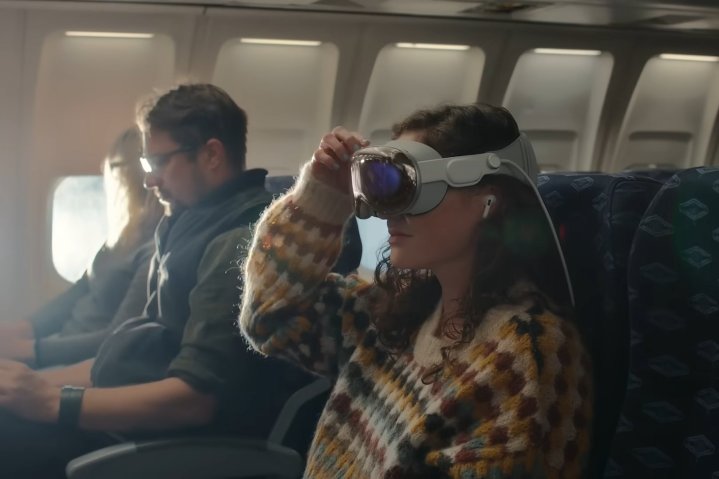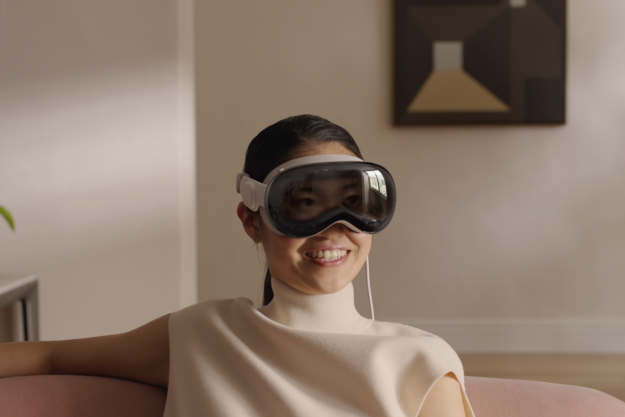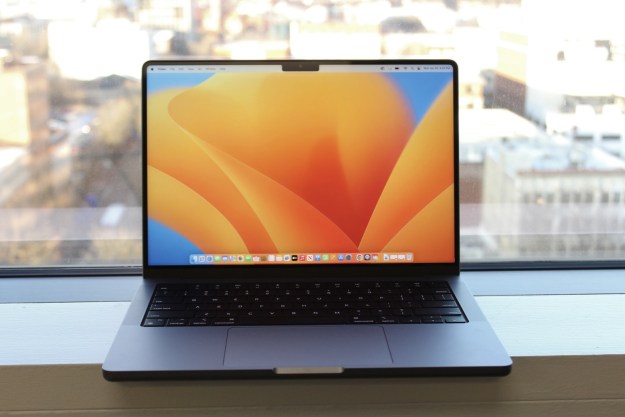
Apple’s Vision Pro headset has been well received since its launch on Friday last week, but there’s one persistent complaint that’s cropped up again and again: It can be uncomfortable to use for long periods of time. That’s something our hands-on reviewer noticed, and they’re far from alone.
Now, though, some enterprising users have found various ways to overcome the strain and discomfort. While they’re far outside the ways Apple envisioned people would use the device, they nonetheless cleverly modify the Vision Pro in non-destructive ways.
For instance, software engineer Bryan Fetterolf posted a short video on X (formerly Twitter) showing off his solution to the Vision Pro’s weight issue, which can leave users feeling the strain on their necks and heads after an hour or two of usage. In Fetterolf’s video, he can be seen wearing a baseball cap and the Vision Pro, with a Velcro strap looped underneath the Vision Pro and around the top of the cap. This way, the headset’s weight is supported by the hat, making it much easier to use for an extended period of time.
While Apple has provided an alternate headband designed to distribute the Vision Pro’s bulk more evenly, it simply adds an extra strap across the top of a user’s skull. Fetterolf’s idea, on the other hand, places the support (the cap’s bill) much closer to the Vision Pro’s weightiest part, potentially providing more relief by directly lifting the device’s eyepiece.
Not recommended
I may have invented a more comfortable Apple Vision Pro strap with just a baseball cap and a high tech rubber band.
It's not touching my face at all. Higher fov, better weight distribution, open periphery and eye tracking still works. It's super comfy. The cap's brim is carrying… pic.twitter.com/z06ukoD2uU
— Haldun (@haltor) February 3, 2024
Fetterolf’s modification is not the only way Vision Pro users have been tweaking the device to make it more comfortable. In fact, Fetterolf’s post was in reply to another mod post on X, this time from Inverse journalist Ray Wong.
Wong was detailing how removing the Vision Pro’s light seal made the device feel “so much lighter.” CNET Editor at Large Scott Stein also tried removing the light seal and found that the visual experience was enhanced, noting that “the FOV [field of view] expands and environment blends, and it feels like glasses.”
Software developer Haldun Kececigil went one further by combining the light seal and baseball cap mods. Their verdict? “Higher FOV, better weight distribution, open periphery and eye tracking still works. It’s super comfy. The cap’s brim is carrying all the weight.”
However, both Wong and Stein cautioned against removing the light seal. Stein warned that “I do not recommend using the Vision Pro [without the] light seal,” while Wong pointedly noted that “Wearing Apple Vision Pro without the light seal cannot be good for my eyes.”
No doubt Apple would strongly recommend against people using the Vision Pro in this way, but it’s clear that people are keen to modify the headset to take some of the strain out of wearing it. That’s something Apple is going to have to address in future models, lest the complaints — and the modifications — continue.
Editors' Recommendations
- MacBook Pro OLED: Here’s everything we know so far
- The most common Skype problems and how to fix them
- This new VR headset beats the Vision Pro in one key way and is half the price
- The biggest threat to the MacBook this year might come from Apple itself
- How to try out the Vision Pro headset yourself




